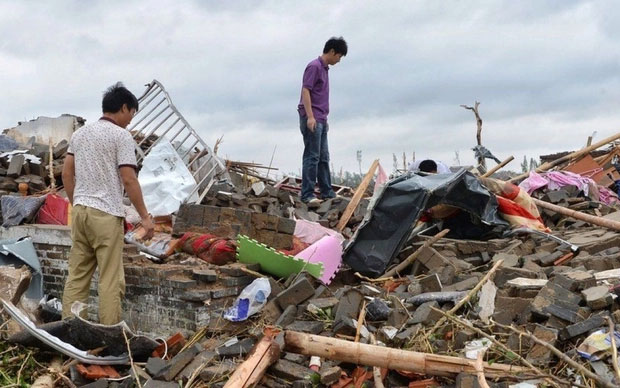By 2030, there may be 1.5 natural disasters every day
The world will face 1.5 disasters per day, or 560 disasters per year, by 2030 if humanity continues to increase the earth's temperature and ignore the risks of climate change, pushing more millions of people into poverty.
That was the warning issued by the United Nations yesterday as the goal of keeping the earth's temperature from rising more than 1.5 degrees Celsius that world leaders pledged in Paris in 2015 is getting further and further out of reach. .

Consequences of natural disasters in China.
According to the biennial report of the United Nations Office for Disaster Risk Reduction, over the past two decades, between 350 and 500 different disasters have been recorded, ranging from floods to floods. floods, droughts and storms to earthquakes and epidemics, ranging in severity from moderate to large. Increasingly frequent and severe disasters have killed or affected more people in the past five years than in the previous five, and could push an additional 100 million people into poverty by 2030. governments fundamentally underestimate their real impact on lives and livelihoods.
The Intergovernmental Panel on Climate Change previously released a report warning that the impacts of climate change from heatwaves to droughts and floods would become more frequent and severe, damaging harmful to nature and people.
According to United Nations Secretary-General Antonio Guterres, the situation of crisis overlapping with climate change, the loss of natural environment and pollution, requires the world to take stronger action.
'We've proven that working together can tackle great challenges. The right to a healthy environment is taking shape. We must rapidly invest in adaptability and resilience, especially in the poorest and most vulnerable, who are at the least part of the cause of this crisis' .
It is estimated that natural disasters have caused an average of $170 billion in damage per year over the past decade, with developing countries and the poorest living there bearing the heaviest losses. These countries have lost an average of 1% of GDP per year, the report notes, which is 10 times more than high-income countries. In the Philippines, for example, millions of people have yet to recover from Typhoon Rai, which hit the country in December 2021, killing more than 300 people and displacing hundreds of thousands of people, with damage amounting to more than 300 people. about 500 million USD.
To help the most vulnerable groups, politicians and decision-makers must commit to more ambitious climate policies, said Mary Joy Gonzales, at the Philippine aid agency CARE. and accelerate the transition to green energy.
With many developing countries still grappling with the economic impacts of the pandemic, coupled with rising debt and inflation, greater international support for disaster risk reduction and construction Building resilience is very important.
- Japan: The country suffers from many natural disasters and the way to protect people makes the whole world admired
- 2012: Many natural disasters, no disasters
- Talking numbers about the consequences of natural disasters
- More than 220,000 people died from natural disasters in 2008
- 5 most catastrophic natural disasters in human history
- The worst natural disasters in 2015
- The era of super disasters in Asia
- Looking back at the 10 worst natural disasters in American history
- 10 worst disasters in US history
- Australia is trying to overcome the consequences of natural disasters
- 2010 - the number of people killed by unusually high natural disasters
- The most severe places of natural disasters on Earth (Part 1)
 Is the magnetic North Pole shift dangerous to humanity?
Is the magnetic North Pole shift dangerous to humanity? Washington legalizes the recycling of human bodies into fertilizer
Washington legalizes the recycling of human bodies into fertilizer Lightning stone - the mysterious guest
Lightning stone - the mysterious guest Stunned by the mysterious sunset, strange appearance
Stunned by the mysterious sunset, strange appearance